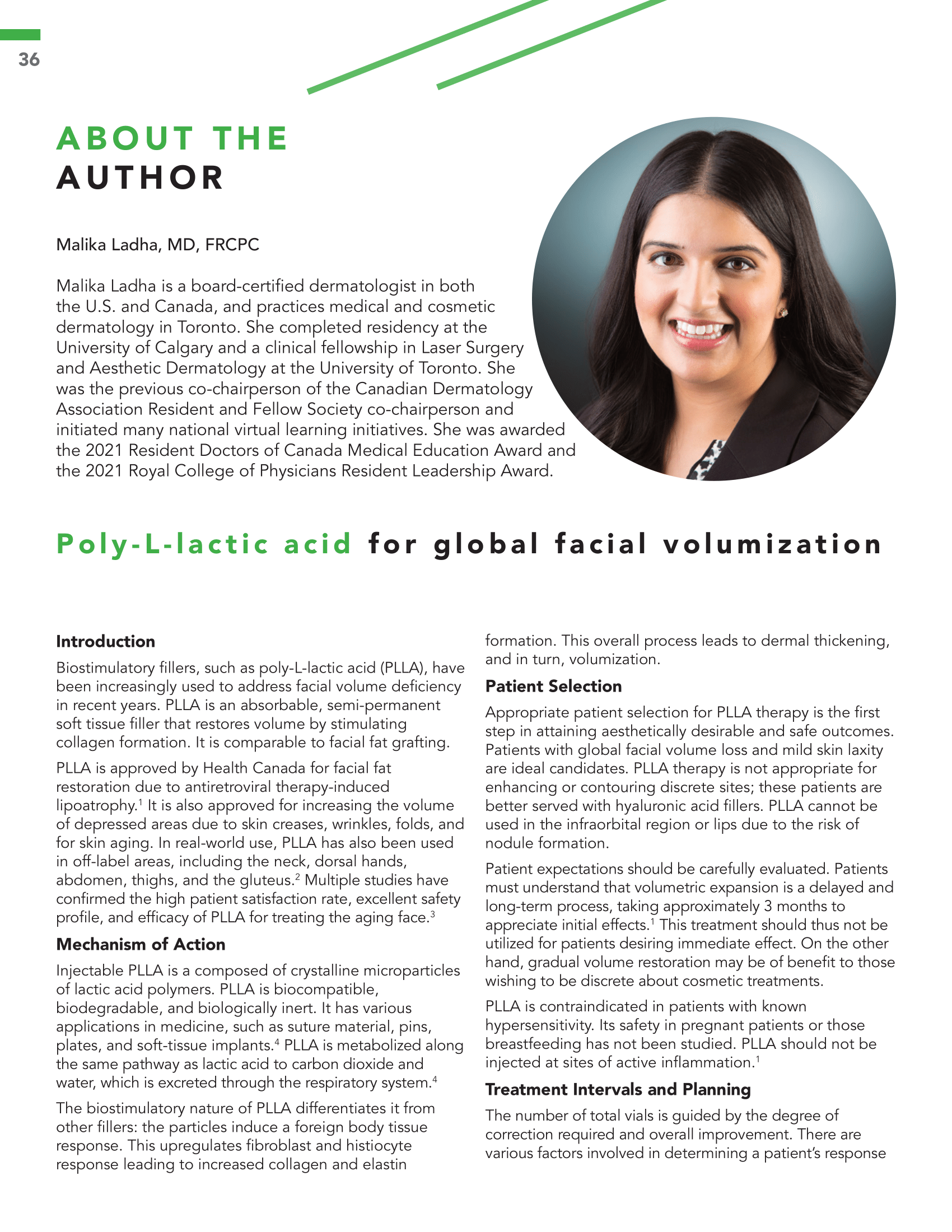Poly-L-lactic acid for global facial volumization
Abstract
Biostimulatory fillers, such as poly-L-lactic acid (PLLA), have been increasingly used to address facial volume deficiency in recent years. PLLA is an absorbable, semi-permanent soft tissue filler that restores volume by stimulating collagen formation. It is comparable to facial fat grafting.
PLLA is approved by Health Canada for facial fat restoration due to antiretroviral therapy-induced lipoatrophy. It is also approved for increasing the volume of depressed areas due to skin creases, wrinkles, folds, and for skin aging. In real-world use, PLLA has also been used in off-label areas, including the neck, dorsal hands, abdomen, thighs, and the gluteus. Multiple studies have confirmed the high patient satisfaction rate, excellent safety profile, and efficacy of PLLA for treating the aging face.
References
SCULPTRA product monograph; https://products.sanofi.ca/en/sculptra.pdf
Jabbar A, Arruda S, Sadick N. Off Face Usage of Poly-L-Lactic Acid for Body Rejuvenation. J Drugs Dermatol. May 01 2017;16(5):489-494.
Lin MJ, Dubin DP, Goldberg DJ, Khorasani H. Practices in the Usage and Reconstitution of Poly-L-Lactic Acid. J Drugs Dermatol. Sep 01 2019;18(9):880-886.
Lorenc ZP, Greene T, Gottschalk RW. Injectable Poly-L-Lactic Acid: Understanding Its Use in the Current Era. J Drugs Dermatol. Jun 01 2016;15(6):759-62.
Palm M, Chayavichitsilp P. The “skinny”on Sculptra: a practical primer to volumization with poly-L-lactic acid. J Drugs Dermatol. Sep 2012;11(9):1046-52.
Rotunda AM, Narins RS. Poly-L-lactic acid: a new dimension in soft tissue augmentation. Dermatol Ther. 2006 May-Jun 2006;19(3):151-8. doi:10.1111/j.1529-8019.2006.00069.x
Valantin MA, Aubron-Olivier C, Ghosn J, et al. Polylactic acid implants (New-Fill) to correct facial lipoatrophy in HIV-infected patients: results of the open-label study VEGA. AIDS. Nov 21 2003;17(17):2471-7. doi:10.1097/00002030-200311210-00009
Woerle B, Hanke CW, Sattler G. Poly-L-lactic acid: a temporary filler for soft tissue augmentation. J Drugs Dermatol. 2004 Jul-Aug 2004;3(4):385-9.


